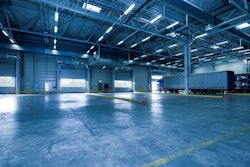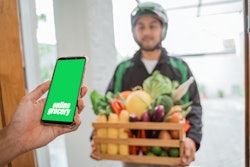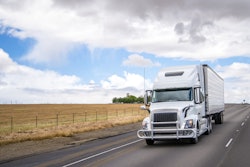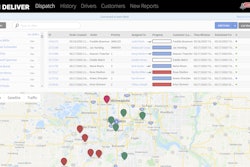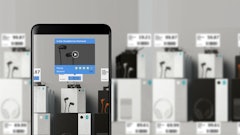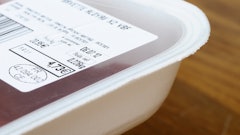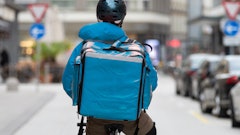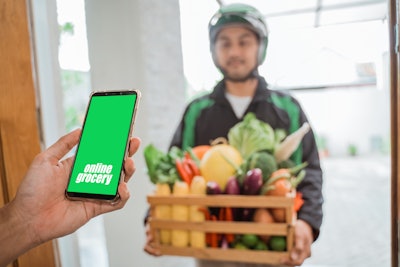
Third-party food delivery was among the fastest-growing sectors of transportation well before the pandemic hit; there were always shoppers who preferred to have someone simply drop off a bag of groceries to their homes, and often made that choice when it was available to them. Why burn the daylight going to the store when you can just get it delivered?
But then, the Coronavirus disease (COVID-19) arrived, bringing with it very real danger in venturing out (not to mention stay-at-home orders for millions of consumers). The market for home delivery exploded in 2020, and is still seeing robust growth into early 2021.
Historically, businesses that produce and sell food items, such as restaurants, grocery stores, retail bakeries and other fresh goods firms, used delivery to a consumer’s home or business as a complement to in-store sales, which still represented the lion’s share of revenues.
That business need has changed dramatically over just the past year. Consumers found themselves sequestered at home, no longer able to make regular trips to their favorite purveyors of freshly made foodstuffs.
When customers can’t get to you, you have to go to them
Suddenly, home delivery for food items was the hottest game in town. Customers drastically increased their use of online ordering – looking for fast, reliable delivery of anything and everything for their homes. More and more consumers became comfortable with shopping from their couches, including online ordering of perishable food staples – and the idea of swapping a weekly trip to the store for home delivery.
For these businesses, running a retail food operation was their core competency. Making same-day, expedited deliveries to consumers was not.
Food-focused businesses initially reacted one of two ways to this logistics challenge:
1) Build an in-house service. Some retailers bought a van or two to do it themselves, effectively creating their own in-house delivery services. That also meant hiring drivers and staffing teams to fulfill orders and planning, scheduling and packing deliveries. But, since the food business is notoriously tight-margined, optimizing this operation is difficult; they had the fixed costs of delivery workers, equipment and operating expenses (fuel, insurance, upkeep), yet demand for deliveries was variable. Some days, even with charging a modest fee for delivery wouldn’t cover the costs. Other days, demand would outstrip your resources; some customer orders would be declined or go undelivered, and you’d have unhappy consumers on your hands -- ones who might be unlikely to ever return.
2) Outsource delivery to a contractor. Others have opted for a third-party approach, contracting an outside organization to make deliveries. The upside was no fixed cost to establish and run a delivery network. All that overhead expense and resourcing falls to the contractor, who receives either a daily fee or one for each delivery depending on volume. The downside was the seller often lost control over the customer experience, having to send customers through a shopping or checkout experience off their own platform. And, sometimes your customer’s orders would be delivered on time, other times not, depending on the volume the third-party and its available network of resources was handling.
The one constant was the need for consistently reliable service, a non-negotiable aspect of delivering fresh, often perishable goods. They needed delivery usually within hours – or less – of an order being placed. Raw chicken and ice cream can be unforgiving, as you might imagine.
A customer might be excited to open up a pint of local artisan ice cream, but they probably aren’t going to be thrilled with Moose Track Soup, which is what they’ll have if it arrives late.
The crowdsourcing model -- Evolving market needs drives innovation
Over the past several years, another third-party delivery model has emerged, called crowdsourced delivery, which taps into a network of drivers using their own personal vehicles for same-day delivery. This model was married with smartphone-based tools, simplifying the process of finding and matching drivers to same-day deliveries as they occurred.
The crowdsourced delivery model is very effective for time-sensitive deliveries like perishable goods, and the platform allows the seller to maintain control of the customer experience.
Speed and reliability ensures freshness
Most food deliveries to homes occur over a short enough time window where drivers in their personal vehicles do not need specialized equipment to maintain a particular ambient temperature. So, in a way, the driver is not unlike a regular customer who shops at a store, loads the groceries in their car and heads home -- and in fact, many drivers are often doing just that when they drop off someone else’s goods along the way.
What all deliveries of this type do need is speed and reliability. And, with literally thousands of drivers on the road every day going from Point A to Point B, the crowdsourced model is a solution that enables this latent delivery capacity to be deployed efficiently and sustainably for businesses, whether they’re located around the block, across town or all over the country.




